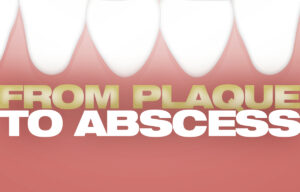
Serious dental infections all start simply enough, bacteria lands on some food stuck to a tooth and starts eating. As the bacteria replicate they start forming a biofilm, a layer of bacteria, that we know as dental plaque.
As the bacteria continue to feast, they start producing acid as a byproduct. This acid starts eroding the outer layer of the tooth – the enamel. But the erosion doesn’t stop there. Once they break through the enamel they make their way through the second level of the tooth – the dentin.
After eating their way through the two layers of the tooth, the bacteria finally reach the center – the pulp. In the pulp the bacteria and the toxins they produce create a condition called pulpitis. At this point, left untreated, the pulp would need to be removed in a root canal procedure in order to save the tooth.
If a root canal is not used in order to save the tooth, the tooth will eventually reach a state of necrosis, essentially meaning that the tooth is now dead and beyond saving. At this point if the tooth is not pulled, the site of the dead tooth can be a source of infection. The body’s immune system will react against the bacteria trying to stop the spread. The result of the body’s reaction is an abscess full of pus.
This journey is a messy affair, but with regular dental visits you should be able to stop the damage before the abscess forms.